[Norman Gilliland, Host, University Place Presents]
Welcome to University Place Presents. I am Normand Gilliland. We have our work cut out for us in this hour because we’re going to cover art from most of an entire continent over the course of two or three or more millennia. And our guide for this exercise is going to be Henry Drewal. He’s a Professor of Art History and Afro-American Studies at the University of Wisconsin- Madison. Welcome to “University Place Presents.”
[Henry Drewal, Professor, Department of Art History, University of Wisconsin-Madison]
Thank you, Norman. A pleasure to be here.
[Norman Gilliland]
How did you get involved in this enormous topic?
[Professor Henry Drewal]
Well, yeah, folks often ask me how does a white guy like you find yourself teaching African art history?
When I graduated from college, I joined the Peace Corps, and I was a teacher in Nigeria in West Africa. I had done languages but also studio art, mostly sculpture. While I was there, I was teaching French and English, but I got less interested in teaching those languages to my Yoruba students and learning more about Yoruba culture that I was living in.
And I made friends with a Yoruba sculptor and asked him if I could become his apprentice. So, I – he agreed, and I did an apprenticeship of maybe about seven or eight months with him in the town where I was teaching, and that apprenticeship transformed my world. It was a transformative experience that changed my whole interest and desire for learning more about African art and African culture and African history.
[Normand Gilliland]
And how did that translate into a profession? I mean, it’s one thing to be, you know, a Peace Corps graduate, alumnus, and doing sculpture, African sculpture, but another to come back to the United States and make a living. How did that tie together?
[Professor Henry Drewal]
Exactly, exactly. I – I never became a Yoruba sculptor, but I wasn’t a non-Yoruba sculptor either. I was somewhere in-between. And I used that body experience, that body knowledge of an apprenticeship, of trying to carve like a Yoruba sculptor to give me an insight into the art forms that I would later teach. So, I came back, did graduate work at Columbia University, earned two masters and a PhD, and started teaching, and continuing to still create.
One of the pieces that I did in a second apprenticeship, a mask-making apprenticeship, is one of the first images I wanted to show you.
[Norman Gilliland]
Let’s have a look at that.
[Slide of Africans in masks]
[Professor Henry Drewal]
This is from a Gelede masquerade performance that’s happening in – in a town not too far from where I was teaching. Gelede masquerades honor the mystical powers of women.
A couple of weeks before the festival, I went to meet the man who was about to organize the annual festival and told him I wanted to come and I said: “Oh, by the way, I carve.” He said: “Oh, really? Well, in that case, make us one. Make us a Gelede mask.” So, I had four weeks to create a mask. And that’s that first one, not the second one, that first one that was on the slide. And that red-face mask is the mask that I created for that festival. As far as I know, it’s still dancing today because it hasn’t turned up at Sotheby’s auction house at – at a high price yet.
So, that apprenticeship gave me insight into the body knowledge of sculptors, a different way of understanding aesthetics and – and intention of artists and what forms they wanted to create and how they were trying to express, in a very powerful way, aspects of their culture and history.
And from that apprenticeship, that bodily experience, I have developed an approach that I call “sensiotics. ” It’s the study of art and the senses.
Because I – I believe that we have to understand that all of our experiences on a continuous basis, every day and every night of our lives, are multi-sensorial experiences.
[Normand Gilliland]
True.
[Professor Henry Drewal]
That we privilege certain senses over others
[Normand Gilliland]
Yes
[Professor Henry Drewal]
but they’re all happening simultaneously. So, I’ve been researching the multi-sensorial, sensorium of Yoruba peoples, writing about it, and in other places as well, as a way to give us a deeper and richer insight into the arts of that culture and other African cultures and, I think, other cultures around the globe.
[Norman Gilliland]
Well, yes, those things would apply, wouldn’t they?
[Professor Henry Drewal]
Yes.
[Norman Gilliland]
The same basic principles. But if were talking about multiple sensual experiences at the same time, I would think performance art would be a prime example of that
[Professor Henry Drewal]
Yes, it is.
[Norman Gilliland]
prime application.
[Professor Henry Drewal]
Yes, exactly, and so I often define myself as an arts historian, not an art historian because I am interested in the performing arts, music, dance, and song as much as I am the visual arts. And that masquerade tradition has many other accompanying traditions among the Yoruba people, like the – the second image that we are looking at
[slide of another African mask]
which is from the Egungun masking tradition, which honors the spirits of ancestors.
With the Yoruba – Yoruba sensorium, I’m defining and understanding not the typical five senses that we talk about, but seven all together.
[Norman Gilliland]
Seven?
[Professor Henry Drewal]
The six being the sense of motion, which is distinctive and very important for the Yoruba, expressed in these dancing masquerades. And the seventh being supersensory perception, what we often term altered states of consciousness or extrasensory perception.
[Norman Gilliland]
That plays into these masquerades?
[Professor Henry Drewal]
Plays into the masquerades and it plays into religious ceremonies where people go into altered states to kind of connect with inter – with supernatural forces of various kinds, whether the ancestors or divinities or God. And so, those altered senses of – of being are also crucial to understand.
And in this image, you are seeing an Egungun masquerade in performance. It’s constructed of elaborate costume of multi layers of panels or flat bits of cloth.
The choreography is primarily a twirling, a whirling, and – and a jumping choreography, so those flaps of cloth fly outward on the air. And the Yoruba say that when their – the spirit of their ancestors dance, they create a breeze of blessing. It’s that motion that is bringing the presence of their departed loved ones back to the world to celebrate with them and honor them.
[Norman Gilliland]
Now as a sculptor of this culture have you had the experience also of participating in these masks – masquerades?
[Professor Henry Drewal]
I am not initiated, so I can’t go into the masquerade itself, but I can create a carved mask like that first one we looked at that is danced by a professional dancer and one who is a member of the – that masking society.
[Norman Gilliland]
So, the extrasensory experience isn’t one you have had directly, but rather more as a reporter you’re following it.
[Professor Henry Drewal]
Well, yes, in a way. Carving the mask was part of my involvement with it. But whenever I would attend a party in Yorubaland I would be expected to dance. And, you know, the first times I went to those parties, I was using my own Brooklyn boogaloo style from the States.
[Norman laughs]
[Professor Henry Drewal]
And my – my Yoruba friend stopped me, he said: “Henry, Henry, please
[Norman laughs]
[Professor Henry Drewal]
Henry, let me tell you the first principle of Yoruba dance: do not disturb yourself too much.”
[Norman Gilliland]
Uh-huh
[Professor Henry Drewal]
So, I had to calm my actions and movements. Make them flow, make them more subtle. So, I was learning how to dance in a Yoruba style. That’s an example of it.
[Norman Gilliland]
This is something you still get to do occasionally?
[Professor Henry Drewal]
Oh, definitely
[Norman Gilliland]
Oh, do you?
[Professor Henry Drewal]
I’m now a Salsero. I dance salsa whenever I can.
[Norman Gilliland]
Oh, is that right? So, those senses are kicking in?
[Professor Henry Drewal, laughing]
They are, they are. I wish I could sing, I can’t sing, but I dance.
[Norman Gilliland]
And what do we have here?
[Slide of masked African hay costume]
[Professor Henry Drewal]
And here is another example of the importance of masquerades in Yoruba, not in Yoruba culture but in Africa. This comes from the Guro people, who live in Ivory Coast in West Africa. This is a wonderful image by a colleague of mine that I love to show because it gives you a sense of that – the importance of motion. This is actually the depiction of a masquerade that represents a forest spirit, something the from deep forest. The – the forest is seen as the abode of – of different kinds of spirits. And this is one that combines both animal and human features as you can see in the carved mask. And that wonderful costume just kind of vibrates in performance. So, another example of the importance of dance and ritual and masquerade.
[Norman Gilliland]
What’s the material then?
[Professor Henry Drewal]
Well, the grasses are coming from the forest, its from plains, and there’s also some raffia. The mask itself is carved in wood and it has these long antelope horns, but if you notice the face, it’s a humanoid face. This is what we would call a composite mask that brings together the spirit world, nature, and culture, humans and animals.
[Norman Gilliland]
Is there a mask tradition for royalty or for leaders of any kind? Would there be a specific kind of mask for those roles?
[Professor Henry Drewal]
Yes, there is, and in fact, the example that we’re looking at now is such a royal mask.
[slide of royal mask]
It comes from the Kuba people of central Africa. And the court, the Kuba court, has a series of masks that refer to mythical royal ancestors. And this is the one that depicts Mwaash a Mbooy. It – it has a very abstracted face. Notice the top of that crown curls down to the front. It’s a reference to an elephant’s trunk, because the elephant is the ruler in his realm, the Kuba king is the ruler in his. And he’s not only got the power and the presence and the stature of an elephant, he can also fly like a bird. So, you see those red parrot feathers at the end. It’s a mixture of many different media each with their own texture and quality and associations. And this is what creates this royal mask.
[Norman Gilliland]
So, I would assume across African cultures there would be a lot of animal representations?
[Professor Henry Drewal]
Very many, yes, right. And lots of proverbs and ideas that – that link animal culture and animal ideas as proverbs and – and kind of wisdom for human action and culture.
[Norman Gilliland]
One of the things you brought with you, Henry, is this fascinating sculpture. What’s the story behind that?
[Professor Henry Drewal]
Well, this is a – this is a piece from Yorubaland. It’s probably a portion; it’s broken at the bottom. It would have had a staff or a base on it previously. And it would have been used by a priest or a priestess probably in honor of one of the Yoruba divinities: Shango, god of thunder and lightning. The devotees or the followers of Shango, when they are initiated, they are termed wives of Shango. He’s kind of a macho divinity.
[Norman Gilliland, laughing]
Some of them are.
[Professor Henry Drewal]
So, even the men devotees become women, in a sense, they become wives of their god. And so, this male figure wears and ties in front a sash because that’s the way you have to present yourself before the altar. And also, his coiffure, as you can see it here, is a female hairstyle
[Norman Gilliland]
Yes.
[Professor Henry Drewal]
that he has now put on to indicate his transformation as a wife of Shango, or follower or devotee of Shango.
I also wanted you to see what a master sculptor from the Yoruba would be able to create. You saw my mask, which was okay
[Norman Gilliland]
Yes.
[Professor Henry Drewal]
but this is a really beautiful piece, and I wanted you to see something by a true master Yoruba sculptor.
[slide of African sculpture and sculptor]
[Norman Gilliland]
Is – is this a Yoruba artist in particular that – that we are seeing here?
[Professor Henry Drewal]
Yes, she is a very famous artist, Abatan. She was known for her earthenware sculpture that you see to the left of – of the screen. She was known for these figurative works, and those – that vessel is an example of one her works, which she created as a kind of altar centerpiece for the divinity that she was a follower of, Eyinle. Eyinle is associated with the river but also with warriors. So, it combines strength and power with the fluidity and the coolness of water. And she developed a very distinctive style, as all Yoruba artists do, and she had a wide reputation in – in – in her country for the work that she was doing, being commissioned to do it for many different people.
[Norman Gilliland]
How far back do these examples of African art go?
[Professor Henry Drewal]
They go back to the earliest examples of artmaking in the world. Unfortunately, we don’t have the names, as we do for Abatan, but the earliest example is now dated to about 70 to 75,000 years before the present.
These were small shells that were found in an archeological site in southern Africa, and each shell had a hole pierced through it so that they were turned into beads.
[Norman Gilliland]
Uh-huh.
[Professor Henry Drewal]
They would have been worn as decoration. That’s one of earliest, earliest examples anywhere in the world
[Norman Gilliland]
70,000 B.C.
[Henry Drewal]
70 to 75,000 years before the present.
[Norman Gilliland]
As far as what we have, what you can show us, now, I-I’ve seen this image of the rock art
[Professor Henry Drewal, laughing]
Yes. Right.
[Norman Gilliland]
which is strikingly similar to, although much later than, what you’d see at Altamira or Lascaux.
[Professor Henry Drewal]
Right, well, this is another interesting thing. Some of the earliest rock art paintings and engravings, like this one
[slide of rock art of cattle]
come from the same era as the Grotte de Lascaux in – in France or Altamira in Spain. The – the earliest are in southwestern Africa in a site that’s been dated to 26 to 28,000 years before the present.
What we’re looking at here, however, comes from another place on the continent that has rich imagery on the rock, caves, and outcroppings. This is central Sahara. The Sahara Desert was never always, was never always a desert. At a certain point in its history it was a well-watered plains land, grasslands. And this image of these cattle comes from that period, from about 5000 to 2000 to 3000 before the – the current era. So, it was a well-watered area, and the people were semi-nomadic and herdsmen. So, this comes from what is known as the Pastoralist Period.
And when I teach about African art, I try to give an overview of some of the key highlights, in that vast and incredibly long history. I mean, I think what we all need to remember is that humanity as we know it, we think, began in Africa
[Norman Gilliland]
Sure.
[Professor Henry Drewal]
began in east Africa. We all are Africans in a sense. It’s time and movement that has taken us from that source, but, so I’m interested in reconnecting us to those artistic traditions from the – from the source continent.
[Norman Gilliland]
It does make you wonder a little bit what’s buried under those dunes of the Sahara.
[Professor Henry Drewal]
Yes, yes, very much, because it is a difficult place to continue to do work. But lots has been found and – and more is still being done.
[Norman Gilliland]
And when – when would that, the image that we just saw, when would that have been discovered? Because the colors are so vivid, I can’t help thinking that it must have been protected very early on after discovery.
[Professor Henry Drewal]
It was, because these are on the inner walls of caves that would have been protected from extremes of weather and from sandstorms and so on. Most of that work dates to the ’30s and the ’40s. There were a number of French archeologists who were documenting and photographing.
[Norman Gilliand]
Sculpture from how far back?
[slide of African bust]
[Professor Henry Drewal]
This is a sculpture from the Nok civilization. This one dates to 800 before the current era. It’s a tradition that goes for at least 1000 years, from about 800 to about 500 of the current era.
It’s a terra-cotta sculpture from Nok, N – O – K, that is found in the central part of Nigeria.
What’s incredible about this – this terra-cotta sculpture is that you are looking at a head that was broken off a body. That head is itself 13 1/2 inches high. Even if the body was smaller, it means that this was a terra-cotta sculpture that was maybe half to three-quarter size life-size. Fired clay is difficult to work
[Norman Gilliland]
A little unwieldy, isn’t it?
[Professor Henry Drewal]
very unwieldy, and unless you’re a very expert potter, that scale of sculpture starts to break and crack in the kiln, in the firing.
[Norman Gilliland]
Do we have any trace of the rest of this figure?
[Professor Henry Drewal]
We have. Yes, we do. We have lots of shards and pieces of other sculptures, some full figures, some of them quite large, others very small. It’s a – a tradition that continued for, as I said, almost a thousand years, and there is great variety and it spreads over a very wide area of central Nigeria.
[Norman Gilliland]
I mean it’s a question that probably artists and art historians would prefer not to even to address, but do we have any sense of the purpose of those figures, those terra-cotta figures?
[Professor Henry Drewal]
Well, we think that some of them were guardian figures within shrines or sacred spaces, altars of various kinds. Some terra-cottas have been found in association with kilns that were for iron smelting. So, we know that Nok was an iron-working culture very early on. One of the things, one of the important things, and I’m working on an exhibition on this issue, is that Africa, the African continent, doesn’t go through a Bronze Age. It goes right from Stone Age to Iron.
[Norman Gilliland]
Oh.
[Professor Henry Drewal]
And that’s because vast areas on the African continent are lateritic soil, high in iron content and surface – iron deposits very close to the surface. So, it was a material that was more easily accessible, and it leads to extraordinary works in iron. I’m not bringing you any examples today but when you see this exhibition, you’ll see that.
[Norman Gilliland]
Okay. I can imagine in the meantime.
[Professor Henry Drewal]
Yes.
[Norman Gilliland]
Here’s another example of fairly early art?
[Professor Henry Drewal]
[slide of African bronze and beaded art]
Yes, it is, from a distinctive culture that’s near the delta area of the Niger River. I think we – what we’re starting to find from research and archeology is that the Niger River in West Africa is West Africa’s equivalent of the Nile in Egypt.
[Norman Gilliland]
In terms of spawning culture.
[Professor Henry Drewal]
In terms of spawning culture and incredible art traditions. This is a work from Igbo-Ukwu. Igbo-Ukwu had a very fine tradition of bronze casting. That’s what you’re looking at. You’re looking at a bronze cast of – of a bird, a miniature bird seated on two enormous eggs. We don’t know what is being expressed in this. But then it has attached to its strands with glass beads and other bronze crotales, or bells, at the very end.
It was probably part of the shrine regalia maybe worn by a priest or priestess at some point. And because of the bird with the – sitting on or kind of resting on the top of these two eggs, we suggest that it has something to do with life and fertility.
[Norman Gilliland]
That – that would make sense.
Do we have any idea of where some of these things were found? I mean something like this looks a little more vulnerable to the ravages of time.
[Professor Henry Drewal]
Well, actually, no, because it’s a bronze casting, it has survived. The terra-cotta did because it was fired clay
[Norman Gilliland]
Sure.
[Professor Henry Drewal]
but the bronze and other metal works have survived. That object was found in a what we think was a storeroom of ritual regalia. One other site was a burial site. We know it was a burial site for an important individual, and many of the things that that individual was dressed in made out of bronze and beads and cloth did survive. And that dates to the ninth century of this era.
[Norman Gilliland]
And – and speaking of terra-cotta, here’s another image
[slide of female terra-cotta bust]
of terra-cotta sculpture which has a more delicate, almost, I want to say, modern sense to it than what we saw earlier.
[Professor Henry Drewal]
Well, it does, you know, yeah. I think many people think: “African art, well, it’s very abstract. It doesn’t look like we look like.”
[Norman Gilliland]
Mm-hmm. Right.
[Professor Henry Drewal]
But in fact, there are important and ancient traditions in Africa that are very realistic or naturalistic, and this is probably the most famous.
It’s a tradition that is called either Ife or its full name, Ile Ife. It’s the – the ancestors of the Yoruba people, so this is a tradition I know well, because this is where I lived and worked and taught and did many – much of my research.
These Ife terra-cottas date to about the 10th/11th century and continue up until about the 15th/16th century. And there is also a tradition of bronze casting or copper alloy casting.
The Yoruba here, you’re looking at – youre looking at probably an important individual because that – this individual, perhaps a woman, wears a crown. And that crown is either a representation of coral beads or stone or glass beads because there was a glass bead industry in the – in the city-state of Ile Ife, where this work comes from, very delicate.
One of the things I like to point out is the composure on the face of this individual.
[Norman Gilliland]
There – there’s some personality there, isn’t there
[Professor Henry Drewal]
There’s a lot of personality, yeah.
[Norman Gilliland]
it’s very individualized.
[Professor Henry Drewal]
And the head, according to the Yoruba and the artists of Ife, is the site of a person’s personal essence, their spiritual essence.
[return to slide of female terra-cotta bust]
One of the ideals of right living is composure of mind, of calmness, and of balance. And this – this portrait certainly, I think, expresses those ideas.
[Norman Gilliland]
What kind of connection do we see between early sub-Saharan art and the Egyptian art that we’re so familiar with?
[Professor Henry Drewal]
There are some striking similarities. If we understand that the Sahara was not a desert back when, that people were moving from the Nile Valley into West Africa and the Niger River valley, I think in the future if we’re able to do systematic archeological work throughout that vast area, I think we’re going to see many more threads and connections between the Egyptian civilization and African civilization. And one of the connectors is, of course, Nubia, the Nubian culture, which is in the upper part of the Nile, which is sub-Saharan essentially just but on the east side of the continent. So, I think thats – that – that will come.
[Norman Gilliland]
You mentioned, I think, copper and alloy work? Here’s an example of that.
[slide of female copper bust]
[Professor Henry Drewal]
There’s a wonderful example, it also comes from Ife. These date a little bit later. There is a large corpus of the terra-cottas. We have a smaller corpus of these copper alloy castings. But this is a lost wax casting process. And they date to probably 12th, 13th, 14th centuries of the current era. Again, that composure of mind
[Norman Gilliland]
Yes.
[Professor Henry Drewal]
and presence. Those striations that you see on the face are perhaps an ancient form of body decoration
[Noman Gilliland]
Mm-hmm.
[Professor Henry Drewal]
perhaps scarification, but it could also be a reference to a painted pattern that may have indicated the special status of this individual. Again, it’s someone who wears a crown-like form that would have been made with these incredible glass beads that were being made at Ife.
[Norman Gilliland]
You mentioned lost wax casting, which is a technique that is still used. But how does that work?
[Professor Henry Drewal]
Well, it’s complicated.
[Norman Gilliland, laughing]
Uh-huh.
[Professor Henry Drewal]
But you start with a clay core, then you sculpt your sculpture on top of it in a thin layer of wax. And then you – you put another layer of clay on the outside, you put it all in – in the kiln to heat. The wax melts out, and then you pour in molten copper alloy into the space that’s left between the outside investiture and the inside core to create such a work.
[Norman Gilliland]
Well, it’s fascinating that such a complicated process would still be with us today. And that implies there’s some kind of continuous use of lost wax casting, but that’s a long way to connect and a lot of distance.
[Professor Henry Drewal]
Yes, and it seems as though, I mean lost wax casting techniques may have developed independently in different parts of the – of the globe.
[Norman Gilliland]
Yeah, and complicated as they are, yes, that would be your first thought, wouldn’t it?
[Professor Henry Drewal]
Yes, yes, right, yeah, yeah.
[Norman Gilliland]
And what do we have here?
[Professor Henry Drewal]
Well, now we – were moving to the kingdom of Benin, and you’re looking at the ruler, the Oba, or the divine king in the Benin kingdom.
[slide of Benin Oba]
This is a photograph that was taken of him in 1958, just before Nigerian independence in 1960. There are these annual kingship rites in the kingdom of Benin, and he’s wearing an incredible coral garment. Coral is the Benin king-kingdom’s association with the sea because it was right along the coast of West Africa and it had – it had connection to the sea and trade routes all along the West African coast.
And the Oba, or divine king, is seen as the human ruler on land, the equivalent of Olokun, the god of the sea and the riches that coral represent. So, he’s in a procession here. He’s wearing that coral and supporting by his attendants. He has these wonderful ivory pendants around his waist and a coral crown on his head. He was also a – a well-educated man and you can see his sunglass – I mean his glasses as well.
[Norman laughs]
So, it’s the past and present coming together in – in his person.
[Norman Gilliland]
Let’s go back a little bit maybe to the 19th century and you have another fascinating
[Professor Henry Drewal]
Right.
[Norman Gilliland]
imaginative piece here and also associated, I think, with ruling class.
[slide of copper bust]
[Professor Henry Drewal]
With ruling class, this is a royal work of art, and it’s the Benin version of a lost wax cast that was done in copper alloy. Some of these are bronzes some of them are leaded brass. And this is actually an altarpiece to honor an ancestral queen mother.
We know that it honors a queen mother ’cause they were powerful in the court structure. We know that this honors her because of that tilting, conical headdress or crown that she wears. It’s known as hen’s beak. It’s a representation of the hen’s beak, and it’s a reference to her as hen mother, taking care of her brood, of her family, of her society, of her community. And she has around her neck strands and strands and strands of what are being represented are these coral necklaces.
[Norman Gilliland]
And that almost far-fetched number of the strands would be some indication of rank?
[Professor Henry Drewal]
Yes, of rank and of wealth. The more strands you have, the
[Norman Gilliland]
the more disposable wealth you have.
[Professor Henry Drewal]
Exactly, exactly.
[Norman Gilliland]
One of the forms of African art in particular, not just African but African we – we associate so much with because, I think, we have more recent documentation of it, is body art.
Now, that would be something that would be largely lost, I would think, hard to preserve. But we do have more contemporary examples of it.
[Professor Henry Drewal]
Right, yes, we’ve been documenting – some of those we see in the earliest examples of art, like the Saharan rock art, where we can see what costumes and things people were wearing. But, yes, the – the – the body arts or personal or decorative arts are still very strong and very alive and well. You’re looking at the image of a Kuba king.
[slide of Kuba king in full regalia]
You saw that Kuba royal mask earlier on. Well, here’s the Kuba king seated in state, flanked by his family. And he’s covered in incredibly beautifully hand-woven textiles that are decorated with cowrie shells.
Cowrie shells were a traditional form of currency, of money, used in many parts of the continent. He’s dressed in, you know, hundred-dollar bills
[Norman laughs]
essentially, and he’s – hes, you know, hes ruler of his community. But he’s the ruler of – of his world, so he has these bird feathers and other animal skins that are part of his attire to express his – his presence and his power.
[Norman Gilliland]
Would this be his formal wear?
[Professor Henry Drewal]
Yes, this is his formal wear, this is not every-day wear. This is – this is for
[Norman Gilliland]
It’d be a little impractical for every-day.
[Professor Henry Drewal]
Yes. Yeah, one other thing I want to mention about the Kuba king. As – as part of the installation, when – when the Kuba people are deciding on the various candidates for kingship, one of the things the king has to do is he has to get up and dance, he has to know how to move. And thats why
[Norman Gilliland]
In all of that?
[Professor Henry Drewal]
In all of that, exactly. And how one moves through the world is one of the ways you see what kind of person you’re going to have. So again, it’s this sense of motion that is important, not only for the Yoruba but also for the Kuba and other African people.
[Norman Gilliland]
It – it – it, sort of, makes you wonder a little bit, I mean, what happens if the king, and this would be a hereditary kingship, typically?
[Professor Henry Drewal]
Yes, yes. Its
[Norman Gilliland]
It makes you wonder what happens if the king just happens to be a lousy dancer?
[Professor Henry Drewal]
Then he’s in trouble
[Norman laughs]
[Professor Henry Drewal]
he’s in trouble from day one.
[Both laugh]
[Norman Gilliland]
Doesn’t come up in Western democracy so much.
[Professor Henry Drewal]
No, not so much. Not so much.
[Norman Gilliland]
In that culture I could see that – that would be a problem. Another kind of body art would be the actual painting, piercing, tattooing, I suppose, of the body.
[Professor Henry Drewal]
Exactly, exactly, yes.
[Norman Gilliland]
[slide of painted African]
That can get to the point where you almost run out of body sometimes, doesn’t it?
[Professor Henry Drewal]
Sometimes, yes.
[Norman Gilliland]
Run out of things to decorate.
[Professor Henry Drewal]
And some of them are permanent transformations that indicate stage of life, but others are temporary for ceremonies or festivals of various kinds.
[Norman Gilliland]
What would the stage-of-life decorations typically be?
[Professor Henry Drewal]
Well, certainly at birth it might be circumcision. Then it would be puberty for both men and women, for boys and girls. Then it might be when a woman gives birth to her first child other marks might be added. And then elderhood, usually no – no marks are made by that time, but it’s those earlier stages.
[Norman Gilliland, laughing]
The medium is not quite as pliable.
[Professor Henry Drewal, laughing]
Right, the skin does that by itself.
[Norman Gilliland, laughing]
Enough said.
[Professor Henry Drewal]
Yeah, and what were looking at here
[return of slide of African in body paint]
is a young man who has just come of – to adulthood. He’s probably maybe 17, 18. He’s a young warrior in the Nuba culture of southern Sudan, and he has body painting all over.
[Norman Gilliland, laughing]
Bring him back, there.
[Professor Henry Drewal]
Yeah, there he is. He’s got this wonderful body painting that is probably a reference to the civet cat because families have totemic animals that they are associated with, you know. And these are kind of like spiritual guides. And so, he – he – the pattern that he puts on his body is a way of saying: Okay, this is the clan that I’m from, this is the group that I’m from.
He has, since his youth, he’s been collecting bird feathers. He’s been hunting and collecting bird feathers, which he has used for the crest on his head. And he’s also adapted and modernized his presentation ’cause if you look closely at his eyes, around his eyes, he’s got eyeglass frames, and he’s got those sunglass ones that flip up and flip down, if you notice.
[Norman Gilliland, laughing]
Talk about adapting to modern circumstances.
[Professor Henry Drewal]
So, it may look very traditional, but this is a modern guy.
[Norman Gilliland]
And this is
[slide of African woman balancing a wash tub on her head]
one of those almost iconic images isn’t it, of – of Africans with the – the grace that’s implied by the ability to maintain your balance, as you say, composure
[Professor Henry Drewal]
Yeah. I was very lucky
[Norman Gilliland]
under certain circumstances.
[Professor Henry Drewal]
to be in the marketplace on the day that this woman came by and agreed to allow me to take her photograph. She has an example of a permanent transformation of body art, a – a tattoo scarification that’s known as “kolo. She is a Yoruba woman. And she’s also wearing a textile like the one that we have with us here that I’ll talk about.
[Norman Gilliland]
Yeah, we’ll get to that in a second.
[Professor Henry Drewal]
Yeah, but I just wanted to say something about this. She has this across her front, so it’s like a permanent blouse that she wears.
[Norman Gilliland]
Yeah.
[Professor Henry Drewal]
It’s a form of beautification for her, but it also makes her very attractive to men. As a Yoruba man confided to me once, he said: “Ah, when we see a beautiful woman with kolo, with these patterns on her body, oh, all we can do is want to go up and touch her and the weather changes to another thing.”
[Norman Gilliland, laughing]
Interesting way of putting it.
[Professor Henry Drewal]
Yes.
[Norman Gilliland]
Now this textile, we can see it here
[Professor Henry Drewal]
Yes. Yeah.
[Norman Gilliland]
and this is – is this kolo, or what’s the source of it?
[Professor Henry Drewal, holding up fabric]
Well, this is – she’s wearing one of these. This is a cloth known as “adire”, and it’s an indigo-dyed fabric. This one has been designed by stitching, by tie and dye. The Yoruba women are famous for these adire textiles. The deep, deep blue is much appreciated; it’s one of the Yorubas’ favorite colors. The pattern is simple but very, very elegant, and she – a woman would wear this as – as a wrapper. This is – this is a contemporary example; it’s made by a woman by the name of Mohinde Makinde from the Yoruba town of Oshobo.
[Norman Gilliland]
And what’s the actual fabric made of?
[Professor Henry Drewal]
The actual fabric is cotton.
[Norman Gilliland]
It is?
[Professor Henry Drewal]
Now it’s imported cotton
[Norman Gilliland]
Uh-huh.
[Professor Henry Drewal]
but some of the older ones are still hand-woven and then dyed with – with the indigo, and the patterned as – as you see it here.
[Norman Gilliland]
Well, we’ve talked about terra-cotta and we’ve talked about lost wax casting and we’ve talked a little bit about alloys, though, we haven’t gotten to, Henry, is gold.
[Professor Henry Drewal]
Well, we are now.
[Norman Gilliland]
Is – is there gold to be found?
[Professor Henry Drewal]
Yes, yes, gold to be found. In fact, I mean, Africa, West Africa was the source of gold for many, many centuries. Mansa Musa, who was the king and emperor of the Malian Empire in, I guess it was about the 10th or 11th century, went on – on pilgrimage to Mecca and brought so much gold with him that it depressed the gold market for five years after his arrival there.
[Norman Gilliland]
Wow.
[Professor Henry Drewal]
And gold is still being mined in and used in West Africa. The earlier name for Ghana was the Gold Coast.
[Norman Gilliland]
Sure.
[Professor Henry Drewal]
It was called and the Gold Coast. And the jewelry that you’re seeing here, gold jewelry, gold leaf, solid gold
[slide of various gold objects]
gold-plated jewelry is all from the Akkan area or that general vicinity.
So, gold is the expression of – of royalty, of wealth, of well-being, and is still being used to a great extent.
The next image
[slide of gold icon]
also comes from this Ashanti or Akkan area. You’re looking at the top part, or the finial of a linguist staff. These are gold leaf; it’s carved in wood and then covered in a thin layer of gold. And these linguist staffs are visualizations of proverbs. And these are meant to be lessons not only for the rulers who use them but for their followers in the community.
So, you are looking at a chief seated on his throne, or stool. He has his hands out in front of him, which is the expression of generosity of spirit. And if you look carefully, under his feet there are a series of other four hands that hold him up.
[Norman Gilliland]
Symbolic of – the symbolism being?
[Professor Henry Drewal]
Symbolic of the support of his people.
[Norman Gilliland]
Uh-huh.
[Professor Henry Drewal]
Without the support of his people he cannot rule well.
[Norman Gilliland]
Oh, that’s a very healthy attitude to take toward royalty.
[Professor Henry Drewal]
Exactly. And – and its – it’s a wonderful image of give-and-take and flexibility.
The Akkan also say leadership is like holding an egg. If you hold it too tightly, you crush it. You hold it not tightly enough; it falls and breaks.
[Norman Gilliland]
Another good image
[Professor Henry Drewal]
Yeah.
[Norman Gilliland]
which many should take heed of.
[Professor Henry Drewal]
Yes, yes.
[Norman Gilliland]
We dont think
[Professor Henry Drewal]
Go ahead, sorry.
[Norman Gilliland]
I was going to say, if – if we’re turning a page here
[Professor Henry Drewal]
Yes.
[Norman Gilliland]
We, at least I, don’t think often of architecture as being, you know, something African in nature that would, you know, translate across the continents. Is there – is there an African, inherently African kind of architecture?
[Professor Henry Drewal]
Well, no, there are many different kinds of architectural forms on the continent because, as you know, the continent is huge and it has very, very different ecological zones.
[Norman Gilliland]
Absolutely.
[Professor Henry Drewal]
That architecture very much reflects the built-in environment. It’s the environment made for human living, so they’re using the materials that they have. The image that we’re looking at now is the Grand Mosque at Djenne in Mali.
[slide of Grand Mosque]
And it’s mud architecture, it’s sun-dried clay soil.
[Norman Gilliland]
I was going to say, it’s exactly the color of the surrounding ground.
[Professor Henry Drewal]
It is, and these are incredible structures. The – the central mosques of every city in Mali are these enormous and beautifully constructed structures. They are made with mud bricks and then those mud bricks are surfaced on an annual basis after the short rainy season ’cause this is a generally fairly dry; it’s sub-Saharan, but it’s a – but its a dry area. And you’re looking at one, that its original form was probably built in the 12th or 13th century and then it was rebuilt again in the early 20th century, and that’s what you’re looking at now.
But these are structures that very much express the religious life and the cultural life and that comes out of earthen architecture in that area.
[Norman Gilliland]
And what about masonry in the sense the more, say, the sense that we are familiar with in – in Europe?
[Professor Henry Drewal]
What you’re looking at here is probably one of the finest monuments of dry-stone wall masonry on the continent.
[slide of earthen wall]
It’s a site that’s known as Great Zimbabwe. The country Zimbabwe takes its name from this architectural site. It was probably a ritual site for powerful Shona kings and queens. This is – this is granite, these are granite blocks that have been hand-cut and shaped to fit tightly to create this wall without the use of any kind of mortar, that’s why we call it dry-stone masonry.
You’re looking at a section of one of the walls of this enclosure. At certain places it rises to 35 feet in height and 14 to 15 feet in thickness.
[Norman Gilliland]
Wow.
[Professor Henry Drewal]
It’s an incredible sight, with decorative stonework at the very top edge that you see there.
[Norman Gilliland]
So, would this be a fortification?
[Professor Henry Drewal]
Well, we don’t think so.
[Norman Gilliland]
Really?
[Professor Henry Drewal]
We think it was a ritual site. There were other stone buildings and walls that probably were fortifications. There’s another outcropping of these on a hill that looks like it was a fortification site, but this was a ritual site. This was for – for probably the – the annual rights of – of rulership in that particular community, and again, an impressive example of architecture of the continent.
[Norman Gilliland]
Is that the same technique used in the pyramids then, where the blocks were so closely fitted without mortar?
[Professor Henry Drewal]
Yes, yes, very definitely. And this is, you know, East Africa, the part of East Africa where we have many traditions of stone architecture. Along the Swahili coast, on various islands and coastal towns there are what are known as “stone towns”, where the houses were built with dry-stone masonry.
[Norman Gilliland]
And what would be the vintage of this one in Zimbabwe that we saw?
[Professor Henry Drewal]
This one in Zimbabwe is probably 12th or 13th century of the current era.
[Norman Gilliland]
And speaking of the current era, speaking of the current era, what kind of things do we find now as we get into the 20th, 21st century in African art?
[Professor Henry Drewal]
Yeah, I always like to emphasize the fact that while I’ve shown earlier examples from the continent, and that earliest example is 75,000 years before the present that I’ve mentioned
[Norman Gilliland]
Yes. It doesnt come earlier.
[Professor Henry Drewal]
artmaking on the African continent is alive and well and very vibrant, all over the continent. And I am just showing you two examples that we have here at the University of Wisconsin-Madison in the permanent African gallery of the Chazen. We have this work by El Anatsui.
[slide of modern African art]
He’s a Ghanaian artist, but he’s lived and worked most of his life in Nigeria, teaching at one of the universities. And this is a work that he calls Worn – “Old Worn Towel.” It’s actually made out of panels of wood that have been engraved and pyro-engraved, and then painted with various colors.
And it’s a series of panels set next to each other that can be re-arranged in different orders, if one chooses. He’s – hes basing it on a textile form where strips of cloth are woven and then basted together, sewn together, to make a large cloth for wearing toga-style. But he’s also making a political comment in this work, because he’s talking about how the colonial era, colonial masters came and just divided and decided the borders of
[Norman Gilliland]
Oh, all willy-nilly.
[Professor Henry Drewal]
Willy-nilly, putting enemies together.
[Norman Gilliland]
Straight lines where rivers made boundaries.
[Professor Henry Drewal]
Exactly, and – and – and the political challenges that Africans face today is partly due to that colonial era. So, he’s commenting about those matters of fragmentation and rearrangement decided by somebody else.
[Norman Gilliland]
Kind of an arbitrary, yes, approach to these things.
[Professor Henry Drewal]
Yes, exactly, exactly.
[Norman Gilliland]
And here?
[Professor Henry Drewal]
This – and this is also a second example from El Anatsui, and it’s also in the Chazen.
[slide of modern African art]
It’s called “Danu”, and it’s a wonderful example of the art of recycling causing because he has taken the metal tops of liquor bottles and other bottles that are flattened out, pierced with holes, and then strung with copper wire to create this wonderful metal textile that hangs on the wall.
And every major art museum now in the world has at least one example of El Anatsui’s works, they have become so iconic.
[Norman Gilliland]
There’s another image here that I – I find quite intriguing. What – what are we looking at here?
[Professor Henry Drewal, chuckling]
Well, okay, Norman, since we’re leaving this program shortly, this is a departure vehicle.
[Norman Gilliland, laughing]
Okay.
[Professor Henry Drewal, laughing]
That’s what we’re looking at. It’s a coffin, a design coffin, or some call it a “fantasy coffin”. There’s a tradition that started in the ’40s and the ’50s in Ghana where people, when they were preparing for their own funerals, decided they just didn’t want to go out in a plain pine box. They wanted a container expressed who they were in their lifetimes, so this – what you’re looking at here is a large cocoa pod turned into a coffin form.
[Norman Gilliland]
They come that big?
[Professor Henry Drewal]
They come, well, the cocoa pod doesn’t, but in – in its form as – as vehicle it does.
[Norman Gilliland]
Oh. Uh-huh.
[Professor Henry Drewal]
It’s a – a- a larger version of it
[Norman Gilliland]
Uh-huh.
[Professor Henry Drewal]
because the man who commissioned this for his own funeral was a very famous and very wealthy cocoa farmer.
You will remember that Ghana supplies much of the cocoa for chocolate all around the world
[Norman Gilliland]
Sure.
[Professor Henry Drewal]
and this was the major agricultural industry in Ghana. So, here we’re seeing a kind of visual epitaph to a very prosperous cocoa farmer who is going to be processed to the grave site in his cocoa pod.
And there’s one other one that you can see at the Chazen that we have just gotten from the artist Eric Anan, who is the grandson of Kane Kwei, who made this cocoa pod. And it’s now in the African art gallery and it’s in the form of an eagle. And eagle coffins were reserved for chiefs.
The eagle was the symbol of chieftaincy
[Norman Gilliland]
That certainly adds character.
[Professor Henry Drewal]
and if you were a chief or a lady chief you could fly to the next destination with – with your eagle.
[Norman Gilliland]
And – and how does that work, [laughs] I mean in terms of the coffin, the eagle, how does that fit together?
[Professor Henry Drewal]
Well, the body of the eagle is the coffin itself. It has wings that fold outward
[Norman Gilliland]
Oh, I see.
[Professor Henry Drewal]
and these are carried in procession from the deceased’s home to the cemetery.
[Norman Gilliland]
Well, that’s – thats certainly, no pun intended, a departure.
[Professor Henry Drewal]
Yes, it is.
[Norman Gilliland]
What about the spread of – of African art to other continents, how big a phenomenon has that been?
[Professor Henry Drewal]
That’s an enormous phenomenon because African people, whether they left the continent involuntarily or voluntarily continued to create wonderful art forms wherever they found themselves.
So, the impact of African American artists on African culture – on American culture is – is enormous. Wherever African people found themselves, they re-created culture, they re-created their artistic forms and traditions, and adapted them to the new conditions that they were in. And today I’ve brought just one example of – of an art from an African diaspora community. These are descendants of Africans that were brought to India since the 16th century – 16th century.
[Norman Gilliland]
Would they have been brought, for what purpose?
[Professor Henry Drewal]
They would have been brought, they were enslaved by the Portuguese, these particular people were enslaved by the Portuguese and brought to Goa on the west coast of India.
[Norman Gilliland]
Portuguese colony, yes, until not long ago.
[Professor Henry Drewal]
Exactly, and a very rich and powerful one. And they came mostly as domestic servants, it wasnt a plantation situation. So, they didn’t come in very large numbers and they probably were working mostly as domestic servants.
They escaped slavery over the generations, went into the interior, set up their own independent communities in the forest and the highlands of what is now the state of Karnataka in India. And the women there have this incredible tradition of patchwork quilts that are just beautiful, so I brought an example to show you. I know you can’t see the whole thing, but at least I wanted you to see these wonderful patchwork traditions.
[Norman Gilliland]
Yes.
[Professor Henry Drewal, holding up patchwork quilt]
where mothers are making them for their daughters on the occasions of their weddings. And when new children come into the family, they’ll make other patchwork quilts. They are used as mattresses and – to sleep on in the hot weather and as covers in the cooler weather. And it’s a tradition that has so many resonances with African American quilting traditions in the South. Theyre – I don’t believe there’s any direct connection, but it is interesting how
[Norman Gilliland]
Well, I was wondering about that, the quilt connection, but its, again maybe just a coincidence.
[Professor Henry Drewal]
Yeah, well, I think it’s a coincidence. I think it’s a case of independent invention in this case.
[Norman Gilliland]
Uh-huh.
[Professor Henry Drewal]
But there is this interesting, very bright cloth because the one I’m showing you was actually a baby quilt or a crib quilt, and one of the Siddi women, one of the African women that I lived with, was telling me: “We like to use very bright colors to liven up our little babies.”
[Norman Gilliland, laughing]
That – that is sort of an African tradition anyway, isn’t it?
[Professor Henry Drewal]
It is. Yeah.
[Norman Gilliland]
I mean everything you have shown us so far, Henry, has had these bright colors, whether it is the masquerade costumes or the masks or – or even the, you know, the figures and the jewelry. They love those bright colors.
[Professor Henry Drewal]
Yes, and – and Yoruba philosophy has lots to say about what colors mean and how they are used. There’s a whole Yoruba chromacy idea.
[Norman Gilliland]
Oh, really? Uh-huh.
[Professor Henry Drewal]
Yeah, because, you know, color, the – the perception of color goes back to the senses, the sense- our perception of color actually involves three senses. It’s the sense of sight, it’s also the sense of movement, because some colors appear to advance toward us and others seem to recede away from us
[Norman Gilliland]
Good point. Yeah. Sure.
[Professor Henry Drewal]
so, it’s a sense of motion and thirdly, it’s a sense of touch, a haptic touch, because some colors we associate with heat, and some we associate with coolness.
[Norman Gilliland]
Very true, yes.
[Professor Henry Drewal]
So, color perception is at least three senses.
[Norman Gilliland]
That’s right, and then they communicate that way in these bright colors that they use.
[Professor Henry Drewal]
Exactly, exactly, and certain colors are symbolic of royalty or certain spiritual forces and so on, so there’s a whole philosophy behind the use of and the importance of color.
[Norman Gilliland]
And we see that spreading with much of the other sense of African art around the world.
[Professor Henry Drewal]
Yes, yes, I think so.
[Norman Gilliland]
Well, thank you for running through how many centuries and
[Professor Henry Drewal]
I’m out of breath.
[Norman Gilliland, laughing]
And how many contemporary countries in Africa, quite a few. Its – its been a
[Professor Henry Drewal]
Thanks Norman, it’s been a pleasure to be with you.
[Norman Gilliland]
A pleasure, touching the surface, Henry.
[Professor Henry Drewal]
Thank you.
[Norman Gilliland]
Look forward to your next visit.
[Professor Henry Drewal]
Thank you.
[Norman Gilliland]
I’m Norman Gilliland and I hope you can join me next time around for “University Place Presents.”
Search University Place Episodes
Related Stories from PBS Wisconsin's Blog

Donate to sign up. Activate and sign in to Passport. It's that easy to help PBS Wisconsin serve your community through media that educates, inspires, and entertains.
Make your membership gift today
Only for new users: Activate Passport using your code or email address
Already a member?
Look up my account
Need some help? Go to FAQ or visit PBS Passport Help
Need help accessing PBS Wisconsin anywhere?

Online Access | Platform & Device Access | Cable or Satellite Access | Over-The-Air Access
Visit Access Guide
Need help accessing PBS Wisconsin anywhere?

Visit Our
Live TV Access Guide
Online AccessPlatform & Device Access
Cable or Satellite Access
Over-The-Air Access
Visit Access Guide
 Passport
Passport






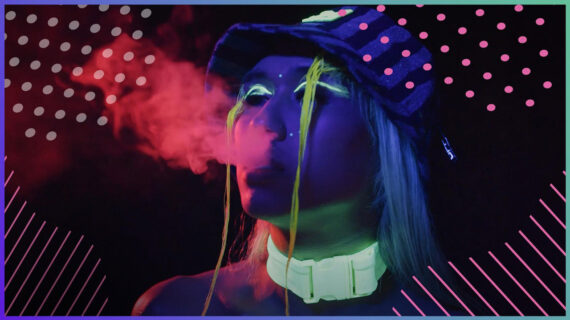
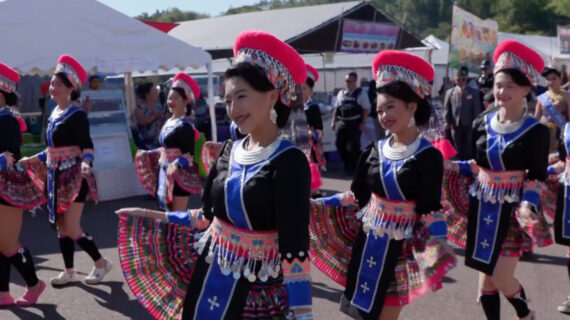
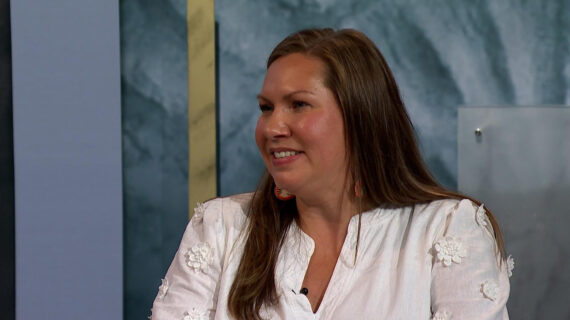
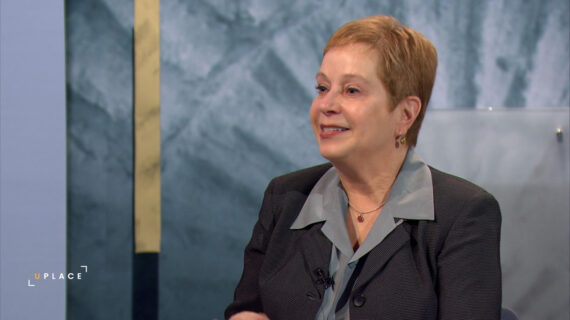
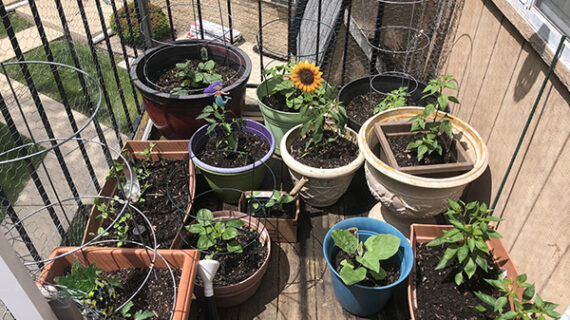
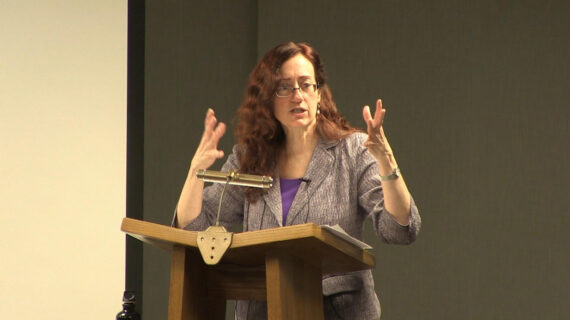
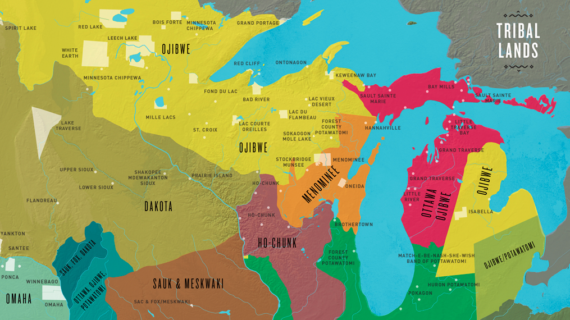
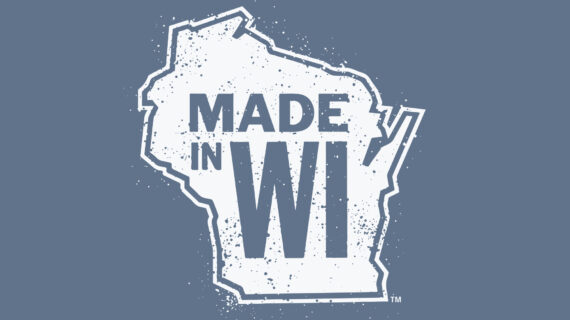

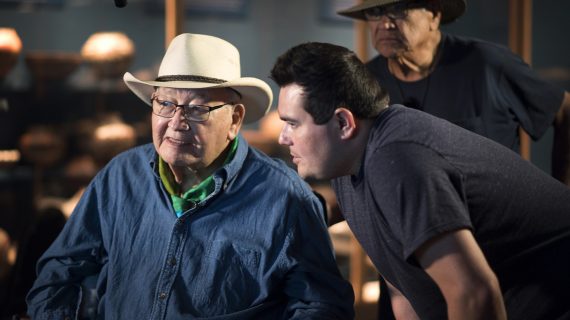


Follow Us